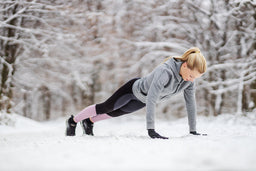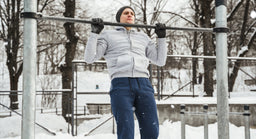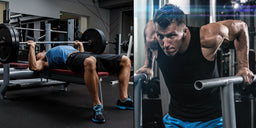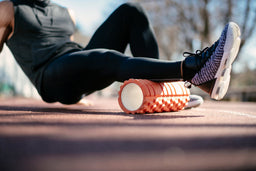
The Beauty of Training Using Pull Up & Dip Exercises
The Beauty of Training Using Pull Up & Dip Exercises
It would be easy to go on and on about how functional and versatile calisthenics training is as a whole. But no two mainstream movements embody these traits quite as much as pull ups and dips. These two exercises are common yet hugely underrated and rarely exploited to their full potential for providing strong, dense functional muscle as well as incredible physique aesthetics.
After mastering the very basic floor movements including press up variations, pull ups and dipping movements are considered a cornerstone of any calisthenics training regime as a next step in the process of mastering control of your bodyweight. The beauty of these movements though is that they can be varied to target and strengthen a huge variety of muscle groups with only the most minor variations in technique. They can also both be performed in most of their variations on two simple yet effective pieces of equipment. A world of challenging and hugely beneficial workout possibilities can be available to you with the simple use of a parallel pull up bar and a set of dipping bars.
Your ability to perform solid pull up movements is considered a serious indication of strength and a show of significant muscular endurance if you can produce in high reps. Because the standard exercise has so many variations, many of which stem from a simple adjustment in how you grip the bar, pull ups can be used to effectively target almost the entire muscle group associated with your back. Wide grip pull ups focus predominantly as many of the variations do, on drawing initial contractions from the lats (latissimus-dorsi) infamous for helping to provide a wider looking back which in turn helps to shrink the appearance of your waist in comparison for a classic aesthetic v-taper look. But if focus hard on retracting the shoulder blades as you reach the top of this move or change to a closer grip with your elbows tucked in, you’ll also be calling on your central back muscles the Rhomboids to help you. Two very important, very strong muscle groups that will assist posture and provide some nice visual touches to your physique.
Switch your grip to and underhand grip or even a neutral grip and you’ll bring your biceps in to play considerably more. The two grips partially emulating both standard bicep curls and hammer curls to help stimulate new tissue growth but also with the potential to elongate the biceps which can lead to increased flexibility despite the new muscle growth. Keep your elbows tucked in towards the top of these exercises and again you’ll make sure to keep your lats and rhomboids working hard in support.
While perhaps not quite as versatile in terms of the limitless number of variations of the pull up, dip exercises are also often overlooked in terms of the number of muscles really being recruited by the movement. Commonly associated predominantly with triceps training, while dips are excellent at promoting growth on all three heads of the triceps, they are also considerably demanding on your chest (pectorals) and the front delts (anterior deltoids) if you’re performing the move correctly. Dips are an extremely popular chest movement among bodybuilders as it can be used to effectively target the tough to train lower third of the pecs. To do this, simply take a wider that average stance with your parallel dipping bars and during the lowering phase allow your elbows to move away from the midline of your body instead of the traditional backward direction. Your chest will stretch significantly towards the bottom of the movement and focussing on this area to engage the rising movement will engage the lower pecs. To really focus hard on the chest and minimise triceps use, don’t extend fully. Instead remain in the lower portion of the movement keeping the stress in the chest.
Whether you’re a bodybuilder, sports athlete or simply an active individual, pull up and dipping exercises provide transferable strength, stability and endurance to all pushing and pulling movements via the individual muscles targeted and the improved muscular connections between these groups both physically and mentally. If you’re looking to improve your max bench look to dips for an alternative approach and if you’re a rock climber of rower who wants to go the distance, rack up the reps on your pull ups for serious muscular endurance gains. Don’t neglect these two common yet understated exercises that you can perform with the most basic of equipment.
































